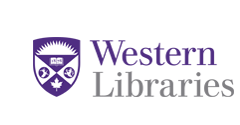
Electrical and Computer Engineering Publications
Document Type
Article
Publication Date
2025
Volume
44
Journal
Sustainable Materials and Technologies
First Page
1
URL with Digital Object Identifier
https://doi.org/10.1016/j.susmat.2025.e01335
Last Page
15
Abstract
Despite its significant environmental impacts, leather remains a popular material due to its durability, aesthetics, and mechanical properties. Recycling leather scraps is gaining increasing attention to reduce waste, pollutants, and emissions from pristine raw materials in the tanning industry. Material Extrusion additive manufacturing represents a promising way to recycle leather byproducts as secondary raw materials for new applications. This paper investigates the characterization and printability of photo- and thermal-curable PVA-based inks for UV-assisted Direct Ink Writing filled with leather filler scraps from the tanning industry, i.e., leather shavings. As a cold extrusion process, Direct Ink Writing reduces energy consumption and maximizes the waste percentage content in new material formulations. The morphology and thermal properties of the leather filler were assessed before adding it to a novel cross-linkable PVA-based matrix, preparing inks containing up to 20 % wt. of leather scraps, leading to almost 40 % wt. after post-curing. Rheological tests showed a shear-thinning behavior of the formulations and a clear transition from solid-like to fluid-like behavior, followed by a quick recovery of the solid-like behavior, ensuring good printability, shape retention, and fidelity. UV crosslinking and post-curing led to robust polymer networks, reaching crosslinking degrees of ∼90 %. According to the mechanical tests, the PVA-leather scrap inks exhibited mechanical properties broadly similar to virgin leather materials, i.e., 170 MPa elastic modulus, 13 % elongation at break, and 6 MPa stress at break. Scanning Electron Microscopy revealed a preferential alignment of the leather filler along the extrusion direction, confirming the reinforcing effect of the scrap particles. These results demonstrate the suitability of these inks as alternatives for new tailored applications in the leather industry, reducing virgin material usage through additive manufacturing.
Creative Commons License

This work is licensed under a Creative Commons Attribution 4.0 License.


